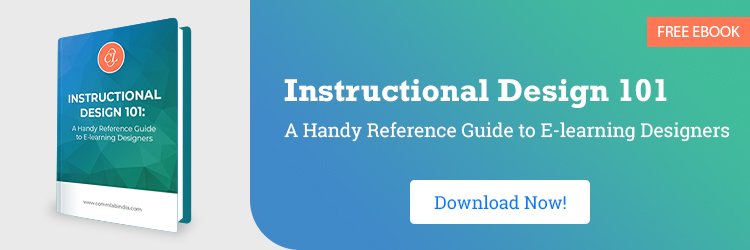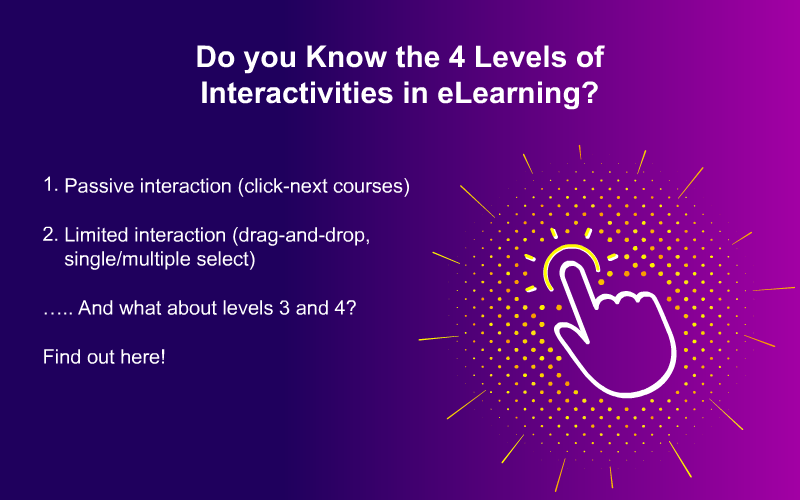W由于浸i当前中断训练id-19 and the ensuing social distancing, most organizations have moved or are considering moving their training online. However, your stakeholders may have reservations about eLearning, particularly when it comes to learner engagement and interaction in the absence of an instructor.
There is a simple solution that can help you:eLearningInteractivities
eLearning Trends 2022 – explore the view from the trenches.
Interactivities ineLearningare elements in the course that provide opportunities for the learner to interact with the content in terms of an action they need to do (such as selecting the right answer), or a reflective thinking activity based on the content.
Interactivities in eLearning are used to:
- Capture attention and engage learners
- Enhance the learning environment
- Address kinesthetics learners (who learn better by doing)
- Help learners participate actively in the learning process
There are 4 levels of interactivities that can be used in eLearning courses – from zero interactivity all the way to complex interactivities that involve games, scenarios, avatars, and more.
So, how do we decide on the level of interactivity to be used in a course? That depends on:
- The target audience
- Their experience witheLearning
- The topic
- What you want your learners to ‘do’ after completing the course
- Your budget and timelines
For more insights on the levels, with their common elements, take a look at the infographic.
In Conclusion
While each of these four levels of eLearning interactivities are best suited to specific training topics/needs, an effective ID skillset is the key to success. And designing them needn’t take a long time, thanks to new-age authoring tools. For other aspects of instructional design, explore this ready reckoner.







![Interactivities in E-learning: To Teach & Assess [Infographic]](http://www.vine9.com/wp-content/uploads/2017/11/custom-elearning-courses-best-practices1.jpg)
![4 Quick Tips to Design Interactive E-learning Courses [Infographic]](http://www.vine9.com/wp-content/uploads/2017/06/quick-tips-to-design-interactive-elearning-infographic.jpg)